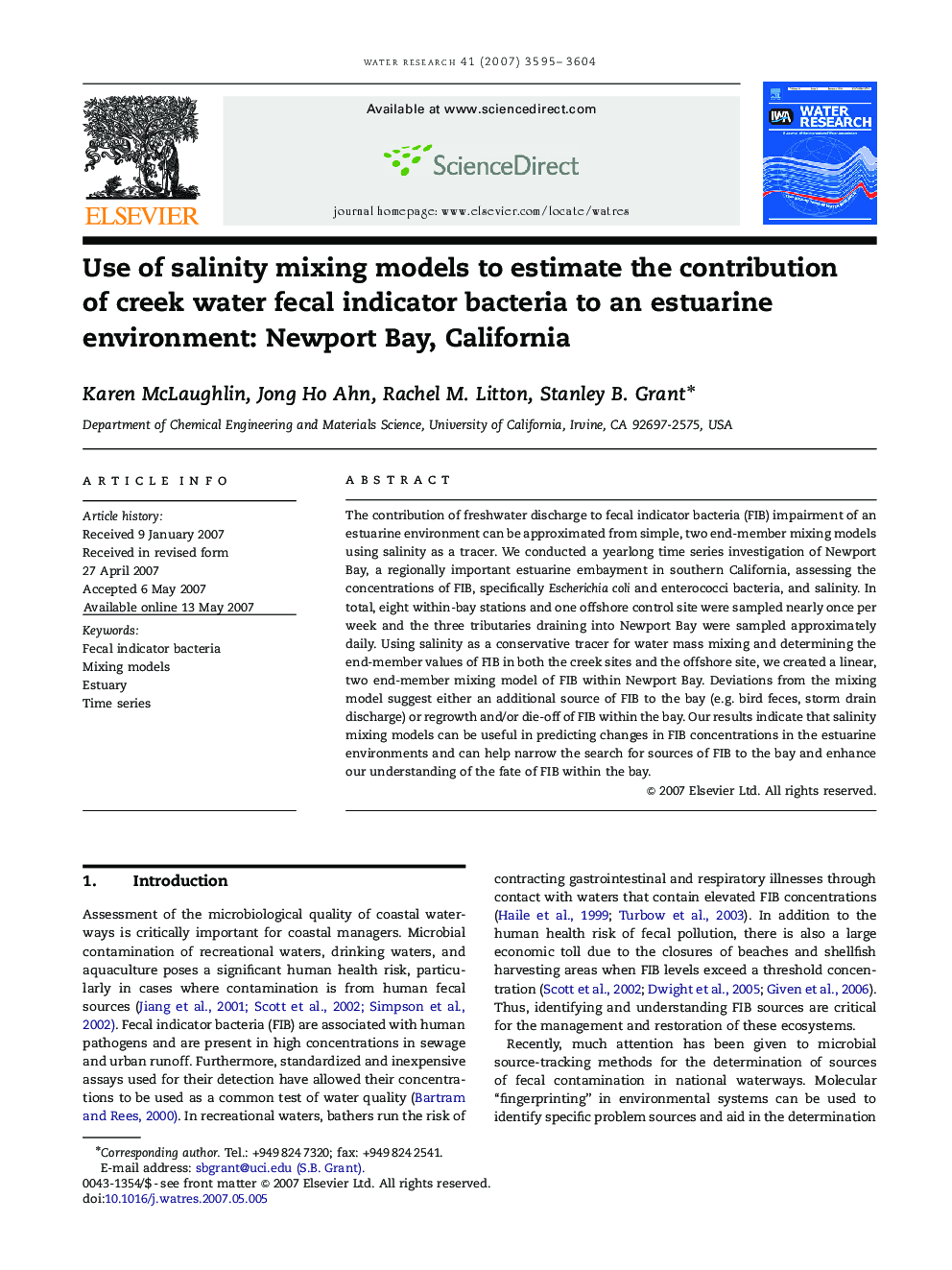| Article ID | Journal | Published Year | Pages | File Type |
|---|---|---|---|---|
| 4486200 | Water Research | 2007 | 10 Pages |
The contribution of freshwater discharge to fecal indicator bacteria (FIB) impairment of an estuarine environment can be approximated from simple, two end-member mixing models using salinity as a tracer. We conducted a yearlong time series investigation of Newport Bay, a regionally important estuarine embayment in southern California, assessing the concentrations of FIB, specifically Escherichia coli and enterococci bacteria, and salinity. In total, eight within-bay stations and one offshore control site were sampled nearly once per week and the three tributaries draining into Newport Bay were sampled approximately daily. Using salinity as a conservative tracer for water mass mixing and determining the end-member values of FIB in both the creek sites and the offshore site, we created a linear, two end-member mixing model of FIB within Newport Bay. Deviations from the mixing model suggest either an additional source of FIB to the bay (e.g. bird feces, storm drain discharge) or regrowth and/or die-off of FIB within the bay. Our results indicate that salinity mixing models can be useful in predicting changes in FIB concentrations in the estuarine environments and can help narrow the search for sources of FIB to the bay and enhance our understanding of the fate of FIB within the bay.
